巻号一覧

後続誌
1 巻, 3 号
選択された号の論文の8件中1~8を表示しています
- |<
- <
- 1
- >
- >|
-
田中 重男1959 年 1 巻 3 号 p. 171-173
発行日: 1959/08/30
公開日: 2009/02/12
ジャーナル フリーThe measurements of the (p, n) cross sections for the nuclei of atomic number 22 to 30 by means of the activation method were summarized. The analysis of the experimental results was made for some typical examples on the basis of the statistical model of nuclear reaction, and the validity of this simple model was discussed.抄録全体を表示PDF形式でダウンロード (157K) -
大塚 益比古1959 年 1 巻 3 号 p. 174-176
発行日: 1959/08/30
公開日: 2009/02/12
ジャーナル フリーSince the importance function has the clear meaning in the reactor theory, the importance equation should also have a certain physical meaning. In the present paper the importance equation and its boundary condition in the diffusion approximation are examined, and it is shown that the equation and the boundary condition are based on the same physical approximation as the original reactor equation, to which the importance equation is adjoint.抄録全体を表示PDF形式でダウンロード (142K) -
原子燃料公社試作1号機を中心として高橋 喜久雄1959 年 1 巻 3 号 p. 177-189
発行日: 1959/08/30
公開日: 2009/02/12
ジャーナル フリーCharacteristics of the U-Scope in general and some special characteristics of the first trial set of U-Scope No.1 of the Atomic Fuel Corp. are discussed and compared with the prototype constructed in the Univ. of Tokyo. Many improvements in electioiic circuits and mechanical constructions raised to some extent the possibility of finding out very weak radioactive sources in fields. With the prototype of U-Scope special patterns, the Simple and Compound patterns by isolated point sources of radioactive substances, are almost perfectly solved in the previous papers, -Journal of Applied Physics, Japan 27, No. 7 (1958); Proceedings of the II Geneve Conference on the Peaceful Use of Atomic Energy, 3 (1958)-with many illustrations and there a response function η (cf. II. 2. a (1)) performed an excellent role in the explanation of the constitution of these patterns. However, Diffused and Background Patterns by outcrops of granitic rocks, slates and so on, and those by scattered sources, for example, debris of stone fragments and gravel on the road, cannot be explained simply by the response function mentioned above.
To make it possible to solve these complicated problems the following three concepts are introduced:
(1) Substitution of equivalent radioactive surface charge on the outcrop for the actual source
(2) The integral response function Y=∫2α -2α η d ø
(3) The fundamental formulae for the calculation of responsibility of U-Scope for scattered sources of radioactivity.
This way of conducting the analysis is well supported by the outcome of discussions concerning the experiments carried out at Tokai, the Lake Biwa, and at the Bay of Kojima in March of 1959.抄録全体を表示PDF形式でダウンロード (4201K) -
ウラン燃料要素に関する研究, (1)武谷 清昭1959 年 1 巻 3 号 p. 190-195
発行日: 1959/08/30
公開日: 2009/02/12
ジャーナル フリーWoosher type thermal cycling equipment are designed and constructed in June 1957. In Japan, however, it is difficult to make it to be as same as ANL Woosher type equipment due to poorer NaK technique. Therefore, evacuated silica capsules containing uranium specimens made by grooved mill rolling at 600° and 300°C, respectively, are used in this thermal cycling equipment. Cycling was performed between room temperature and 550°C up to 1, 000 cycles in maximum and the thermal cycling growth coefficients are measured at the three stages shown in Table 2 From this experiment, the uranium rod rolled at 300°C was always found to have higher thermal cycling growth coefficient than the rod made at 600°C irrespective of the holding time at room and elevated temperature. The effects of rolling temperature of uranium rods on the thermal cycling growth coefficient are also described. The specimens after 1, 000 cycles are metallographically examined and sub-grains having crystal orientation of 2 or 3 degrees different from each other are observed. This experiment is one of the surveying test to find the best fuel element for JRR-3 reactor in which natural uranium is to be used as fissile material.抄録全体を表示PDF形式でダウンロード (2325K) -
臭素酸塩斎藤 信房, 富田 功, 古川 路明1959 年 1 巻 3 号 p. 196-202
発行日: 1959/08/30
公開日: 2009/02/12
ジャーナル フリーThe behavior of recoil bromine atoms arising from the n, γ reaction on bromate samples in various physical states was studied. The samples irradiated with neutrons were bromate crystals, aqueous bromate solutions and anion exchange resins loaded with bromate ions.
A large fraction of radioactive bromine atoms appeared in such a chemical form as bromide which may be separable from bromate by ion exchange or solvent extraction, whereas the remaining active atoms were found in bromate form.
The degree of retention of active atoms as bromate was dependent strongly upon the physical state of the irradiated sample, decreasing in the following order; solid, solution, resin. The retention values in the solid, solution and resin samples were, respectively, about 20, 5 and 1%.
Clean-cut separation of bromate and active bromine in the irradiated resin samples was performed by successive treatment of the resin samples with 0.5M KNO3 and then 2M KNO3. The elution with 2M KNO3 brought about an effluent containing active bromine atoms with an enrichment factor of, for instance, several hundred. It is worth mentioning that some fraction of active bromine was retained in the resin phase even after the elution with KNO3 was completed.
Brief discussion was made regarding the mechanism of the retention of active atoms in solid, solution and resin phases.抄録全体を表示PDF形式でダウンロード (1189K) -
石川 寛, 黒井 英雄, 古橋 晃1959 年 1 巻 3 号 p. 203-216
発行日: 1959/08/30
公開日: 2009/02/12
ジャーナル フリーこれは,米国オークリッジ国立原子力研究所所長Alvin M. Weinberg博士の来日に際し,日本原子力研究所東海研究所において,昭和34年5月7日(木), 8日(金), 9日(土)の3日間にわたり行なわれた一般講演,および主として原子炉開発部の研究課題について行なわれた講演およびその後の質疑応答の要旨である.抄録全体を表示PDF形式でダウンロード (3241K) -
1959 年 1 巻 3 号 p. 216
発行日: 1959年
公開日: 2009/02/12
ジャーナル フリーPDF形式でダウンロード (32K) -
1959 年 1 巻 3 号 p. 217-218
発行日: 1959/08/30
公開日: 2009/02/12
ジャーナル フリーPDF形式でダウンロード (160K)
- |<
- <
- 1
- >
- >|